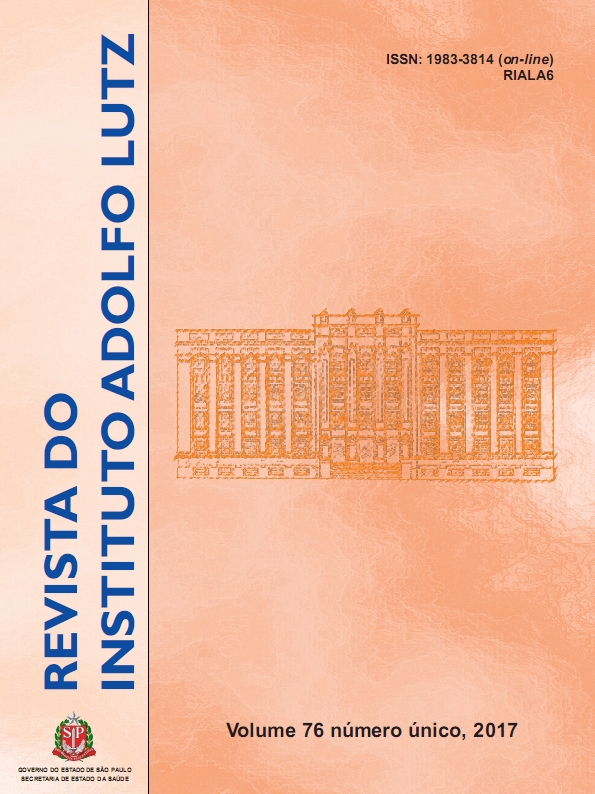Abstract
Despite the increase in the supply of gluten-free products, an option limitation in the bread-making market is still observed. The objective of this study was to determine the physicochemical and sensorial characteristics of the cakes formulated with the wheat substitute flours. Two formulations containing mixed wheat substitutes (amaranth, quinoa, soybean and cassava starch) and a control sample (containing wheat) were analyzed on the measurements and proximate composition. Total coliforms, pH and titratable total acidity (TTA) were determined at the 1st and 4th days of storage. Acceptance and preference were assessed by means of sensory tests. The data were evaluated by the variance analysis, followed by parametric and non-parametric tests at 5% probability. The cakes presented physical characteristics of measurements similar to the control formulation. The formulation containing the highest soybean contents showed the major lipid contents when compared to the control. The mixedflour cakes had similar acceptance and preference, but lower than the control sample. The samples pH and TTA were stable during the four days of storage, and no growth of total coliforms occurred. Therefore, it is viable the formulation of these products with good acceptance and nutritional value.References
1. Araújo HM, Araújo WM, Botelho RB, Zandonadi RP. Doença celíaca, hábitos e práticas alimentares e qualidade de vida. Rev Nutr. 2010;23(3):467-74. [DOI: https://dx.doi.org/10.1590/S1415-52732010000300014].
2. Ramos NC, Piemolini-Barreto LT, Sandri IG. Elaboração de pré-mistura para bolo sem glúten. Alim Nutr. 2012;23(1):33-8.
3. Wieser H. Chemistry of gluten proteins. Food Microbiol. 2007;24(2):115–9. [DOI: https://dx.doi.org/10.1016/j.fm.2006.07.004].
4. Kirinus P, Copetti C, Oliveira VR. Utilização de farinha de soja (Glycine max) e de quinoa (Chenopodium quinoa) no preparo de macarrão caseiro sem glúten. Alim Nutr. 2010;21(4):555-61.
5. Morr CV, Hoffmann W, Buchheim W. Use of applied air pressure to improve the baking properties of whey protein isolates in angel food cakes. LWT-Food Sci Technol. 2003;36(1):83-90. [DOI: https://doi.org/10.1016/S0023-6438(02)00187-1].
6. Vieira TS, Freitas FV, Silva LAA, Barbosa WM, Silva EMM. Efeito da substituição da farinha de trigo no desenvolvimento de biscoitos sem glúten. Braz J Food Technol. 2015;18(4):285-92. [DOI: https://dx.doi.org/10.1590/1981-6723.1815].
7. Osawa CC, Fontes LCB, Miranda EHW, Chang YK, Steel CJ. Avaliação físico-química de bolo de chocolate com coberturas comestíveis à base de gelatina, ácido esteárico, amido modificado ou cera de carnaúba. Ciênc Tecnol Aliment. 2009;29(1):92-9. [DOI: https://dx.doi.org/10.1590/S0101-20612009000100015].
8. Gutkoski LC, Teixeira DMF, Durigon A, Ganzer AG, Bertolin TE, Colla LM. Influência dos teores de aveia e de gordura nas características tecnológicas e funcionais de bolo. Ciênc Tecnol Aliment. 2009;29(2):254-61. [DOI: https://dx.doi.org/10.1590/S0101-20612009000200003].
9. Instituto Adolfo Lutz (São Paulo - Brasil). Métodos físico-químicos para análise de alimentos: normas analíticas do Instituto Adolfo Lutz. 4a ed. São Paulo: Instituto Adolfo Lutz; 2008.
10. Minim VPR. Analise Sensorial: Estudos com consumidores. Viçosa: Universidade Federal de Viçosa; 2006. 225p.
11. Brasil. Ministério da Saúde. Resolução RDC nº 12, de 02 de janeiro de 2001. Aprova o Regulamento Técnico sobre Padrões Microbiológicos para Alimentos. Diário Oficial [da] Republica Federativa do Brasil. Brasília, DF, 10 jan. 2001. Seção 1, no7-E. p.45-53.
12. Schamne C, Dutcosky SD, Demiate IM. Obtention and characterization of gluten-free baked products. Ciênc Tecnol Aliment. 2010;30(3):741-50. [DOI: https://dx.doi.org/10.1590/S0101-20612010000300027].
13. Rodas B, Bressani R. Contenido de aceite, ácidos grasos y escualeno en variedades crudas y procesadas de grano de amaranto. Arch Latinoam Nutr. 2009;59(1):82-7.
14. Franco BDGM, Landgraf M. Microbiologia dos alimentos.São Paulo: Atheneu; 2003.
15. Borges AM, Pereira J, Silva Júnior A, Lucena EM, Sales JC. Estabilidade da pré-mistura de bolos elaborados com 60% de farinha de banana verde. Ciênc Agrotec. 2010;34(1):173-81. DOI: [https://dx.doi.org/10.1590/S1413-70542010000100022].

This work is licensed under a Creative Commons Attribution 4.0 International License.
Copyright (c) 2017 Instituto Adolfo Lutz Journal
